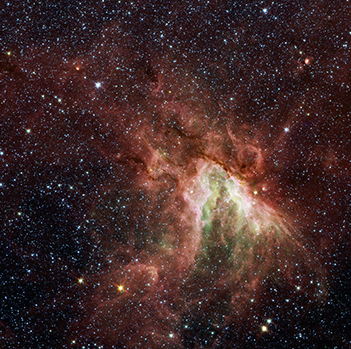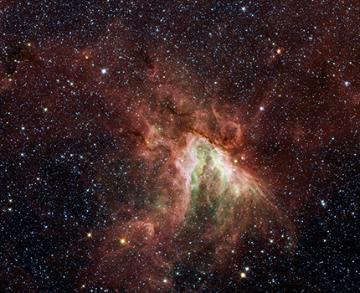
Science, God, Life
A Response to Br. Guy Consolmagno, S.J.
In college, my mother, who was no doubt worried about me hanging out with the wrong crowd, gave me a book called BROTHER ASTRONOMER: ADVENTURES OF A VATICAN SCIENTIST .1 At the time I wasn’t much interested in Catholic stuff, but I was interested in science, and the guy writing the book (whose name actually was “Guy”), was a Jesuit and a scientist who wrote in a way that drew me in on the very first page. Once I opened it (my fatal mistake!) I could not stop reading. I read the whole book, despite my supposed lack of interest. And when I did finally set it down, I had more respect for the Catholic Church. At the time, that was no small feat.
Being young and thinking I knew everything, I was firmly in the science-answers-all camp. This was really another way of saying I was in the “I answer all” camp, since I knew science. There was one small gap in my science-answers-all armor, however. Biochemistry had taught me something about the immense complexity of even the tiniest living cell. I remember sitting in class one day in college, looking at the board covered in biochemical pathways, thinking “Oh, my God, we should all be dead!” It was all too much, molecules and enzymes flying everywhere, too impossible to think about, much less to actually have happen to maintain life. “Who came up with this stuff!? If this is what we are made of we should not be alive ... and yet we are alive.” At the time I thought that my “Oh, my God” was no appeal to God, but perhaps God thought otherwise. That was a crack that made many other questions possible.
Years passed and life, especially a volunteering experience overseas, slowly drew me back toward the Catholic Church. I saw another of Brother Guy’s books and read it too—another easy- to-read, fun book about being both Catholic and a scientist. For Brother Guy, there just was no conflict between the two, and the secular preoccupation with opposing religion and science simply made no sense. After I had read these books, it was the people holding the “conflict thesis” of science and religion who began to look strange to me. Those who held that science and religion were harmonious seemed to have the stronger case.
Years passed again. I transitioned from studying genetics to studying Catholic moral theology. Science and religion became the inescapable subtext of all of my work. How could Catholic ethics and science talk to each other, if at all, I wondered? Eventually I found an answer that I liked and got a Ph.D. for it. And then I started working at Santa Clara University, at the Markkula Center for Applied Ethics and School of Engineering, teaching practical ethics.
Enter Brother Guy Consolmagno, S.J., once more. When I learned Brother Guy was coming to speak on campus, I literally jumped out of my seat. Coming here! This “Guy” was important to the course of my life! What could I do?
I attended, of course. With two books to autograph.
Seeing Brother Guy in person was a joy. And I appreciated his talk even more than his books. He’s a great speaker, tells lots of jokes, and makes the
The wondrousness of nature should not only inspire our words but also our actions ... If science and theology, separately or together, tell us anything, it is that in this world there is nothing ordinary. If what we see is ordinary, it’s only because we haven’t really looked well enough.
material very accessible. He not only affirmed that science and religion need not substantively conflict (something I was well aware of, having studied so much myself ), but that science actually needed God.
His lecture described the fit of a scientific worldview with a Christian perspective on the universe by reflecting on three axioms—three fundamental assumptions that make science possible.
First, you have to believe the universe is real. Seems pretty straightforward, right? Nope. The entire universe could be an illusion after all. This could all be a dream, or perhaps we are deceived by tricky superior beings, or we could be in a computer simulation. These might seem unlikely, but to assume against them is a choice, and not a logically necessary one. That reality is an illusion is a possibility, but not likely one that those who believe in a good, creative God would hold.
Second, you have to believe that the universe follows laws. It is not all chaos, or mere whim of nature spirits or other deities. The first step here is to separate natural explanations from theological explanations. Consolmagno recalled the story of Typhon versus Zeus. Typhon was a volcano god who periodically attempted to burst forth and storm the heavens, and Zeus would fight him back with lightning bolts, driving him underground. With an explanation like that, who needs science? It is not the laws of nature at work, with geologic heat and electromagnetism, but rather the inscrutable wills of dueling deities. However, Consolmagno posited that God is not gerrymandering nature; rather, God leaves nature under the guidance of laws, which humans can seek to discern via observation and experiment.
Third, once you determine that the universe is real and follows laws, you still might ignore them. Big deal, right? We are all forced to follow the laws of nature: Why bother knowing more than what we learn by falling out of a tree? After all, it’s not like we can do anything about them!
But, of course, we can do something about natural laws—not changing them but working within them to produce amazing technological marvels. Yet technology itself did not inspire our forebears’ scientific inquiries; rather, what they saw in the laws of nature was the handiwork of God. Wow, God made this, let’s learn about it! Such were what Brother Guy called “Oh My God” moments.

During Brother Guy’s two years teaching astronomy and physics in Kenya as a Peace Corps teacher, he discovered crowds eager to look through his telescopes and exclaim with awe and joy at the wonders of the sky. Looking at the stars makes us exclaim “Oh, my God!” Like Brother Guy, I also worked for two years in international service—my post was in the Marshall Islands with Jesuit Volunteers International. One night, far from any city lights, with cockroaches whizzing through the night air, I looked up at the moon with my host family. The father asked me, “Did people really go there?” I said they did. Silence. Then another question: “Why don’t they go back?” I replied that I didn’t know. More silence. Then, with some understatement: “I think they should go back.”
“Oh, my God,” was implicit in his words. He knew a good thing when he heard it. If that can be done, why ever stop? The joy of learning and discovery should propel us forward not just once, but forever.
Brother Guy characterized the “Oh My God” response of science as “a human birthright” and the ultimate reason that science needs God. The discovery, amazement, and joy of understanding and experiencing something new take us one step beyond science’s three simple axioms; “Oh My God” makes science meaningful. As persons made in the image of God, we look up and see the creation from which we have come, which points to the God whom we reflect. Oh, my God!
There was another connection too. Such exclamations of amazement, of disbelieving wonderment, connect me to my earlier biochemistry bewilderment. We should rightly be dead, and yet we are not. Fifteen years on, my perspective has been completely inverted. Nothing changed about reality, of course, but now when I consider the complexities of existence I think: “Oh, my God, we should all be alive!” Fully alive, not just as a collection of metabolizing chemicals, but living as the best humans we can be: doing justice, loving beauty, teaching in ways that inspire wonder and awe, supporting each other’s transformation. We should live beyond physical life, to a higher life. The wondrousness of nature should not only inspire our words but also our actions. For some this may mean doing science, for others it may mean teaching, for still others it may mean doing very ordinary tasks with great care. But if science and theology, separately or together, tell us anything, it is that in this world there is nothing ordinary. If what we see is ordinary, it’s only because we haven’t really looked well enough.
Brian P. Green is Assistant Director of Campus Ethics Programs at the Markkula Center for Applied Ethics and Adjunct Lecturer in the School of Engineering at Santa Clara University. His undergraduate degree is in genetics from the University of California, Davis, and his M.A. and doctoral degrees are in ethics and social theory from the Graduate Theological Union in Berkeley. His dissertation was on the relationship between natural science and Catholic natural law ethics.
Endnotes
- Br. Guy Consolmagno, S.J., Brother Astronomer: Adventures of a Vatican Scientist (New York: McGraw-Hill, 2000).